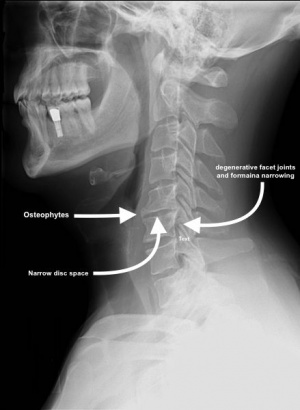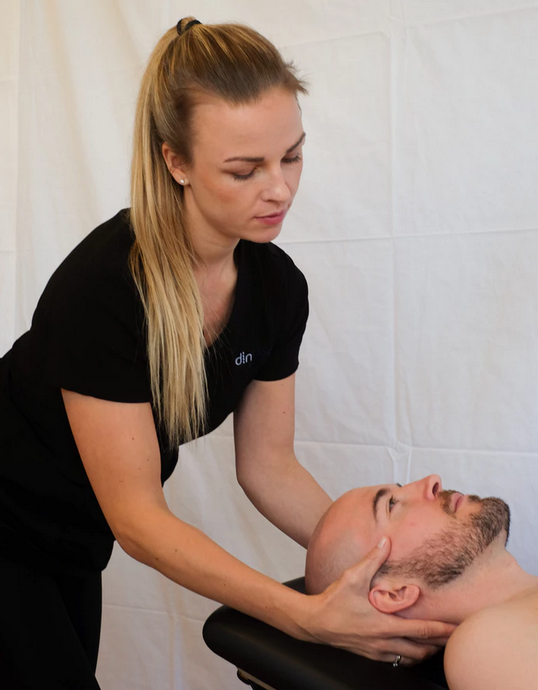nalco group
bone, muscle & joint pain physio
BOOK NOW / WHATSAPP ABOUT YOUR PAIN OR INJURY
- ORCHARD 400 Orchard Road #12-12 Singapore 238875
- TAMPINES 9 Tampines Grande #01-20 Singapore 528735
- SERANGOON 265 Serangoon Central Drive #04-269 Singapore 550265
Home > Blog > Team > Physio > Conditions We Treat > Painful Spine Conditions > Cervical Spondylosis
Cervical Spondylosis

Cervical spondylosis is a general term for age-related wear and tear affecting the spinal disks in your neck.
What happens is that with time and use, the spinal disks dehydrate and shrink, signs of osteoarthritis develop, including bony projections along the edges of bones (bone spurs).
Unfortunately, cervical spondylosis is very common and worsens with age
More than 85 percent of people older than age 60 are affected by cervical spondylosis.
The good thing is that most patients wont experience any symptoms from these (they may not be aware even); and when symptoms do come up, non-surgical treatments such as spinal physiotherapy are often effective.
CERVICAL SPONDYLOSIS Symptoms
As mentioned earlier, for most patients, cervical spondylosis causes little to no symptoms.
When symptoms do come up (or when they cant be ignored any longer), the most common symptoms are
In some cases, cervical spondylosis can cause a narrowing of the space needed by the spinal cord and the nerve roots that pass through the spine to the rest of your body. If the spinal cord or nerve roots become pinched, you might experience:
- Tingling, numbness and weakness in your arms, hands, legs or feet
- Lack of coordination and difficulty walking
- Loss of bladder or bowel control
When to see a doctor if you have CERVICAL SPONDYLOSIS
Seek medical attention if you notice a sudden onset of numbness or weakness, or loss of bladder or bowel control.
what are the Causes of CERVICAL SPONDYLOSIS?
As you age, the bones and cartilage that make up your backbone and neck gradually develop wear and tear.
These changes can include:
- Dehydrated disks. Disks act like cushions between the vertebrae of your spine. By the age of 40, most people's spinal disks begin drying out and shrinking, which allows more bone-on-bone contact between the vertebrae.
- Herniated disks. Age also affects the exterior of your spinal disks. Cracks often appear, leading to bulging (herniated) disks — which sometimes can press on the spinal cord and nerve roots.
- Bone spurs. Disk degeneration often results in the spine producing extra amounts of bone in a misguided effort to strengthen the spine. These bone spurs can sometimes pinch the spinal cord and nerve roots.
- Stiff ligaments. Ligaments are cords of tissue that connect bone to bone. Spinal ligaments can stiffen with age, making your neck less flexible.
Risk factors that contribute to CERVICAL SPONDYLOSIS
Risk factors for cervical spondylosis include:
- Age. Cervical spondylosis is a normal part of aging.
- Occupation. Jobs that involve repetitive neck motions, awkward positioning or a lot of overhead work put extra stress on your neck.
- Neck injuries. Previous neck injuries appear to increase the risk of cervical spondylosis.
- Genetic factors. Some individuals in certain families will experience more of these changes over time, while others will not.
- Smoking. Smoking has been linked to increased neck pain.
CERVICAL SPONDYLOSIS PHYsiotherapy treatments

In very rare occasion, surgery with orthopaedic doctor (spinal / neck specialist surgeon) may be a necessary solution for medical emergency accidents such as fractures, unstable joints.
For other neck pain which are severe, or chronic (have been present for very long time), there are many types of treatment which are conservative (non-invasive, non-surgical) that can help.
- Physiotherapy for Cervical Spondylosis: Our senior physiotherapists will do in-depth assessment to understand your neck pain and this includes performing physical examinations. This is very important as we need to accurately diagnose your neck pains / condition before treating your neck pains.
- Manual therapy: Passive cervical joint mobilization, manipulation, manual traction, craniosacral therapy
- Massage Therapy: techniques such as soft tissue release, deep friction massage, myofascial release, trigger points release
- Pain Relief Therapy: Ultrasound Therapy, electrical stimulation, TENS, heat therapy
- Spinal Decompression Therapy: Using computerized system creates an anti-gravity, negative pressure to the cervical spine on the spinal disc, joints, nerves and muscles.
- Shockwave Therapy: Advanced high energy pulses effective for chronic, persistent neck muscle tightness, trigger points to stimulate healing
- Exercise Therapy: Guided progressive stretching and strengthening neck muscles, postural correction exercises
